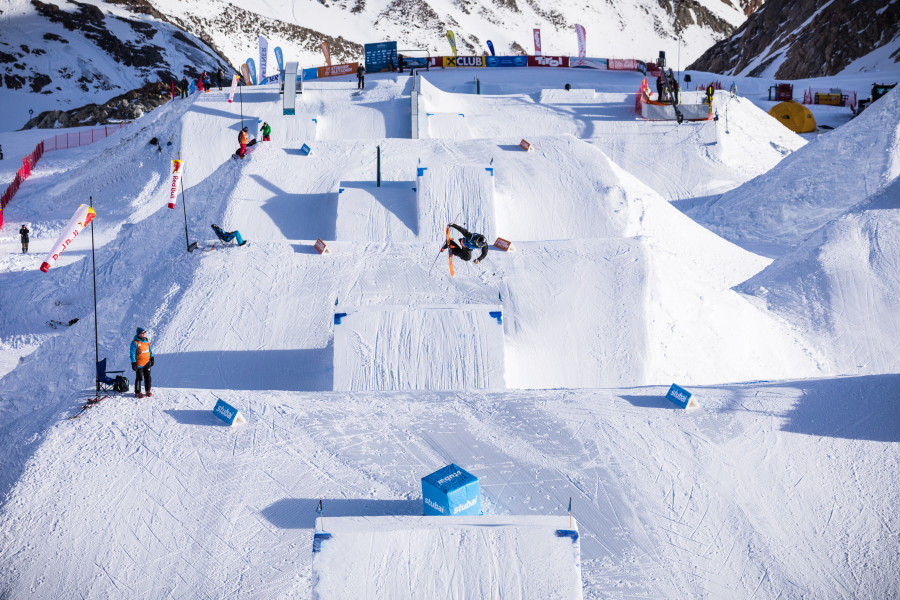Obstacle, straight jump or rainbow – The language of snowboarders and freestylers is full of words outsiders won't understand at first. If you're one of these outsiders, we're here to help you. We've put together the most common elements in a terrain park and will explain what you can do with them.
First of all, the general term for all elements found in a terrain park is obstacle. These can be divided into kickers or jumps, jibs and pipes. They come in all sorts of different shapes, sizes and difficulty levels. Here's an overview of the most important terrain park elements:
Pipes
The half pipe is an absolute classic among freestyle elements. Built into the park's slope, the gradient inside the pipe provides the speed needed to perform tricks. For professional freestyle contests, organizers often go to great lengths and build super pipes. These are often over five meters (16 feet) high and therefore unsuitable for beginners.
Pipes can be found stand-alone as well. These quarter pipes are the simplest variation of so-called verts, where jump and landing are identical. To avoid driving into a wall of snow or simply sliding back down the pipe backwards, you'll have to reach a certain level of speed.
Kickers and Jumps
Spectacular jumps and tricks are performable at kickers. They are typically made entirely out of snow and vary in size and difficulty. Mini kickers require less speed to be overcome, making them ideal for beginners. Experienced freestylers will prefer the larger super kickers. They are usually the largest obstacles in the park and require an extensive run-up and high speed to be passed. The time freestylers spend in the air is accordingly long.

The coolest tricks and highest air time are reached at straight jumps, a type of kicker. The larger ones among them are also called big air. Often, several of them are placed in a row as a kicker line.
Tables are popular obstacles among beginners, since they are some of the easiest jumps in the terrain park and make for great practice obstacles. As the name suggests, their shape is similar to that of a table. If you're going slow, you'll land on the table's even top surface. At a faster speed, you'll be able to jump across to the other side of the obstacle. Tables are often combined with other elements.
Jibs
Jibbing means sliding across something, which is exactly what freestylers do at jibs. Turning, jumping or performing tricks are also possible while jibbing. The difference between Jibs and Kickers is that Jibs are made of synthetic materials, steel or wood instead of snow. They often show similarities with urban elements, such as railings, tables and barrels.
A classic among Jibs are rails. Snowboarders try to slide down the round or oval metal pipes as long as possible. Especially for freeskiers, wider elements like boxes are easier to handle. Boxes have a larger plastic surface on the top with metal rails on the sides. Due to their shape, metal pipes with a larger diameter are called mail boxes.
Rainbows are a special type of jibs. Here, freestylers are first slowed down and then accelerated again in a curve, so make sure you don't lose your balance!








